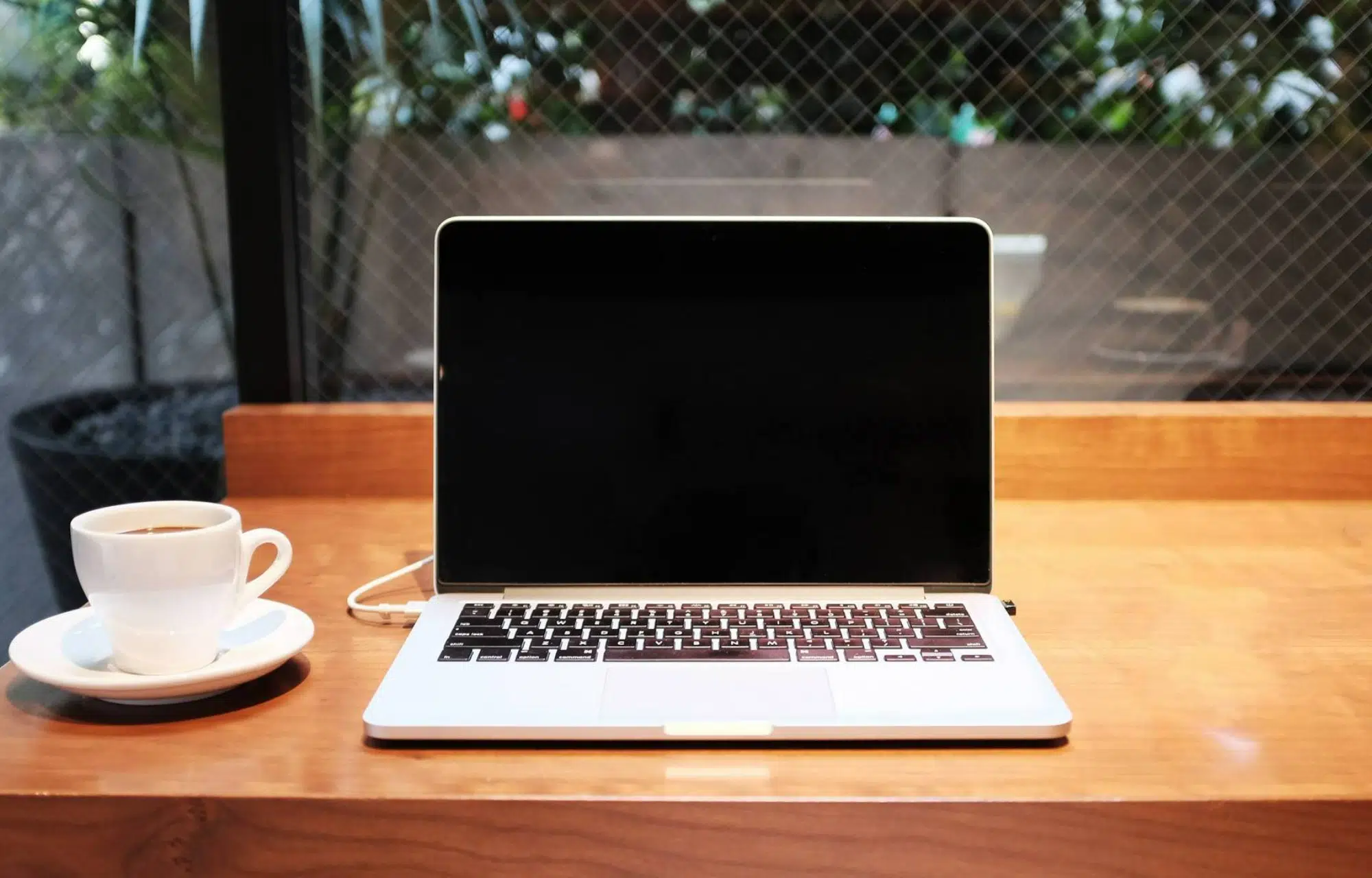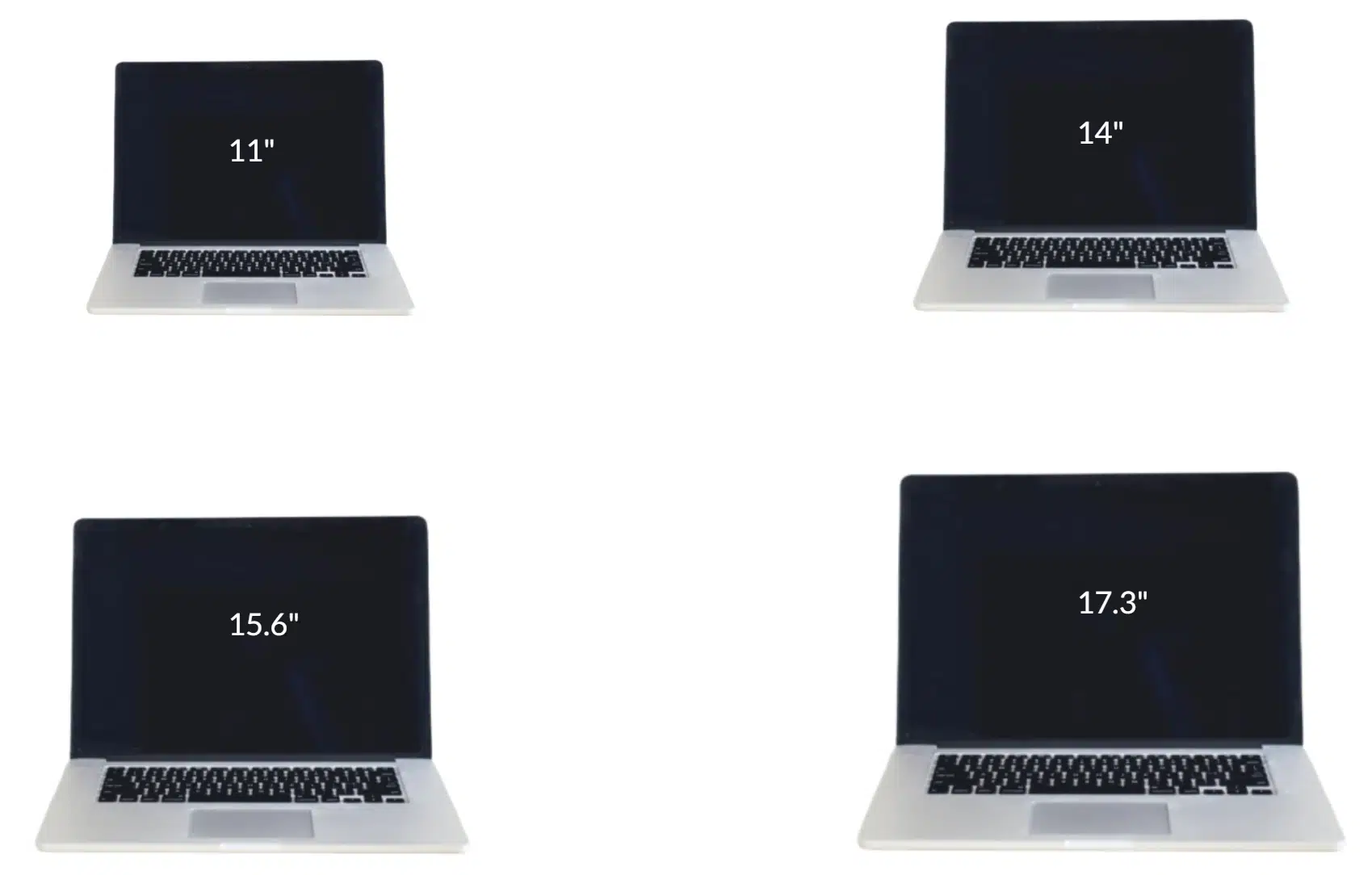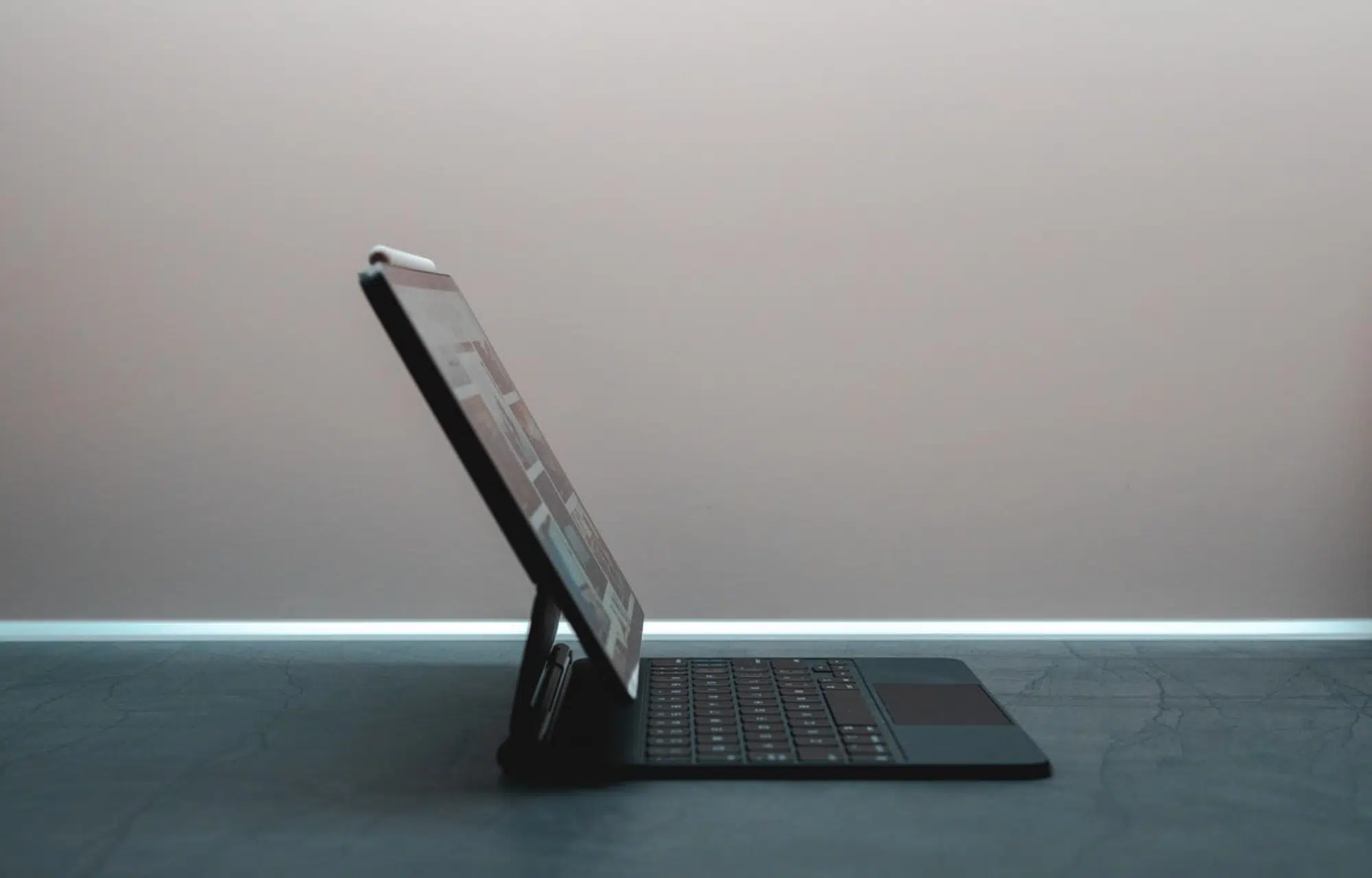Looking for the perfect laptop in an ocean full of options can be pretty challenging.
There are a lot of famous brands, models, and specs that can get overwhelming if you are not much into the technical side. After all, there is so much more to laptops than getting a Windows or macOS, isn’t it?

Good thing is, you don’t need to do Ph.D. level research to get an awesome laptop to complete your work.
In this guide, we will explain what you should specifically look for in a laptop.
Let’s have a look at the elements you should consider.
Laptop Buying Guide 2022 – 5 Things to Look For
Here are the five key aspects you should consider when buying a laptop in 2022.
- Operating Systems (OS)
- Size
- Style & Functionality
- Specs (Hardware)
- Budget
1. Operating Systems (OS)
Unless you are stepping out in the computer world for the first time, you must have a preferred operating system in your mind. In general, you will hear about these four OS – Windows, macOS, Linux, and Chrome OS. Let’s have a closer look at these.
Windows OS
The most user-friendly operating system is Windows. Most of the software plus games can run seamlessly on the latest versions of Windows OS. While hunting for the perfect pick, you will come across a majority of laptops that run this OS, making it the customers’ choice. From touch screens to fingerprint readers, Windows is organized and equipped with many smart features.
macOS
macOS is an Apple product and you will find this in Macbooks. With similar functionality to Windows 10, the interface of macOS seems neater and users get Siri, a smart digital assistant to help you get work done. You can connect the laptop with all your Apple devices and apps to finish your work seamlessly.
Chrome OS
If you are into simple tasks that involve a web browser, Chrome OS is worth considering as you won’t find more affordable options than notebooks equipped with Chrome OS. The interface is similar to that of Windows, but with limited functionalities. With new Chromebooks, you can run your mobile Android apps and can easily chat with friends plus surf the web securely and easily.
Linux
As for Linux, the learning curve is not friendly and professionals looking for something specific opt for this open-source platform. Some of the most popular apps, such as MS Office and Adobe’s Creative Suite won’t run on it, but there are other open-source alternatives. It is not a user-friendly solution, not to mention the complex interface.
2. Size
The size is all about how portable you need your laptop to be. Generally, you will find laptops with a 15.6-inch screen and this is a decent option for most users. However, if you are planning to carry your laptop and use it a lot on the go, you might consider laptops with smaller screens. Here are some of the generic display sizes:
11-12 Inches
These are the lightest laptops and are typically slim and weigh around 2.5-3 pounds. These laptops are good for you if you don’t care about large displays and simply want to focus on the work and performance.
13-14 Inches
It is one of the most stable solutions if you are looking for both great usability and portability. This laptop usually weighs around 3.5-4.5 pounds, making it a good pick for travelers. You can find some pretty good laptops in this display range.
15-16 Inches
The market is flooded with 15.6 inch laptops and this is a perfect choice if you can finish your work without carrying the laptop around with you. From basic configurations to powerful beasts, you will find it all in this display range.
17-18 inches
If your laptop will stay on the desk for most of the time, you can consider a laptop with a 17-18 inch screen size. It is for users who want to grasp more content on the screen. This screen size is preferred by graphic designers and coders.
3. Style & Functionality (2-in-1 Laptops)
Many laptops fall in the category of 2-in-1. These are generally flexible touchscreen tablet laptops that allow 360-degree movement.
So, you can switch anytime between a laptop and a tablet per your requirements. Such laptops are usually preferred by graphic designers, animators, and video editors to quickly draw a sketch or edit a photo/video.
From folding laptops to detachable ones, you will find a wide range of options in this category. However, if you don’t need to use your laptop as a slate to draw or touch things, then you can skip this option. You will easily get better value for money with traditional clamshell laptops.
4. Specs (Hardware)
Your specs will determine what your laptop can do, such as playing games, running software, writing codes, or browsing the internet. Here are some specs to look for:
CPU (Processor)
The CPU is the brain of your laptop and defines the performance. The CPU clock speed means how fast the tasks will execute. The better and higher the CPU model, the quicker and more seamless experience it will deliver. There are mainly two brands out there – Intel and AMD.
- Intel – Intel processors usually come at a rating scale of 4-10 and deliver good performance. The power consumption and battery life proves to surely be an issue in some of the Intel laptops. The sub-classifications are mainly Xeon, Pentium, Core i3, Core i5, Core i7, and Core i9. The higher you go, the better the processor is. For decent performance, Core i5 is a good option and if you are looking for a power-packed machine, consider i7 or i9. All of the lower processors from Intel are very basic.
- AMD – AMD processors come at a 5-10 scale. For similar performance, you will be paying fewer bucks for AMD processors as these are cheaper than Intel processors. The subclassification here is mainly Ryzen series like Ryzen 4000 and 5000 series, AMD A, FX, and E series. The Ryzen CPU chips are Intel equivalent of i5 and i7 that deliver a powerful performance. On the other hand, the AMD A and FX series are found on low-cost laptops for basic functioning.
Professionals – For professionals, such as graphic designers, programmers, and app developers, the processors with great benchmark scores to look for are Intel Core i7, Intel Core i9, AMD Ryzen 3000 series, AMD Ryzen 4000 series, and AMD Ryzen 5000 series. These processors are also great for medium and high-end gaming.
Beginners/Casual users – For casual laptop users and beginners looking to simply watch movies, surf the Internet, play low-end games, and do some basic stuff, some budget processors are Intel Core i3, Intel Celeron, Intel Pentium Gold, AMD Athlon, and AMD Ryzen 3 1200.
GPU (Graphics Card)
A GPU, or a graphics card chip, is responsible for generating quality images on your screen. The lower-end laptops are equipped with integrated graphics that are enough to run basic applications and perform decent functions. However, if you are looking to play high-end games and run graphic designing/video editing software, you should consider getting Nvidia and AMD chips. These have different versions, such as Nvidia GeForce RTX 3060, 1080, or Radeon RX 6600. Again, to compare them, Google two GPUs and look for the benchmark score.
RAM (Memory)
RAM is responsible for storing all the currently running programs and tasks. So, the more your RAM is, the more programs you can run at the same time without having lagging issues. In general, 8GB of RAM is decent for most users. However, if you will be running intensive applications or games, then you can go for 16GB or more as per your applications’ requirements.
Storage
The storage is the laptop’s internal drive, which decides how much data the laptop can hold. This includes everything from installed applications and downloaded videos to games and music on the laptop. Generally, 1 TB of storage space is enough for most users. You also need to choose between HDD and SDD. An HDD drive will cost you fewer bucks, but if you opt for SSD, you can get a faster speed.
Display
Laptop display consists of certain elements. Firstly, you will need to look at the pixels you want, such as HD, Full HD, 3K, or 4K resolution. The more pixels it has, the clearer and sharper content will be on the screen. Next is the brightness and color accuracy. IPS display panels are great for graphic designers. However, if you are looking for the very best picture quality, consider an OLED display. Check the refresh rate next. Anything greater than 120Hz is great for gamers and 60Hz is good for designers.
Ports
Ports allow you to easily connect multiple devices and accessories to your laptop for the easy transfer of data. Generally, you will need a couple of USB A ports and a USB C port to quickly connect thumb drives and your mobile phone. Moreover, if you want to directly access the Internet through the Ethernet cable, make sure that your laptop has an Ethernet port. Apart from that, look for a card reader port and HDMI port, if you are into photography and editing.
5. Budget
From $150 to more than $2500, laptops come in different price ranges. So, if you have a budget to maintain, this point should be your number one priority. Based on your budget, you can filter out the options and choose the one that best suits your requirements.
$150 – $250 Price Range
The least expensive laptops are Chromebooks or low-spec Windows systems with slower processors and less storage. These laptops are generally used by school students or users who need to do basic work.
$350 – $600 Price Range
You can get a laptop with an Intel Core i5 or AMD A8/Ryzen CPU along with 8GB of RAM and 500GB SSD, which is a really decent configuration. If you are looking to play medium-end games and do office or school work, you will find a good laptop in this range.
$600 – $900 Price Range
If you are looking for pure performance, a great build quality, and a good value for money, you will get specific work-oriented laptops in this range. Also, you will see more premium finishes and high-resolution displays on these laptops.
$900+ Price Range
You can expect portable and powerful laptops above $900. These are equipped with faster processors and graphics cards that allow you to have the ultimate gaming experience. These mainly include gaming laptops, graphic designing laptops, app development, and programming laptops.
Frequently Asked Questions
Which is the most user-friendly Operating System?
Windows is the user-friendly Operating System that is preferred by most users.
Which size should I prefer for lightweight laptops?
11-12 Inches is the preferred size for lightweight laptops.
What are the processors suitable for professionals?
Intel Core i7, AMD Ryzen 3000 series, AMD Ryzen 3000 series are the best processors for professionals.
What makes a laptop run faster?
The computer’s memory and processor both have an effect on how fast your laptop works. The higher the number the faster the speed of the laptop. For example, a laptop with 8GB RAM runs faster than a 4GB one and an i5 processor runs faster than an i3 laptop.
Time for Laptop Hunting!
Pay attention to all of these points and refer to them while browsing different laptops. Make sure to thoroughly read the specifications and while comparing two laptops, always look for perfect CPU and GPU combinations. RAM and storage can be generally upgraded at reasonable prices once you buy a laptop. So, you can compromise on these if you are shy on budget.
The last thing to consider is the warranty that the brand offers. Make sure that there is multi-channel support and proper service centers in place to help you in case you have any trouble.
That’s it from my side. Have a great time finding the perfect laptop for you!




